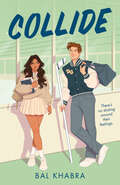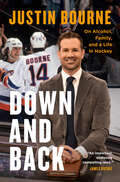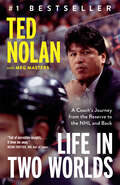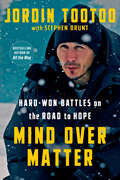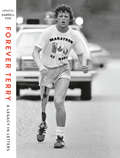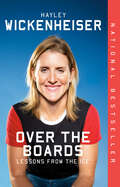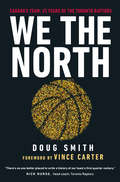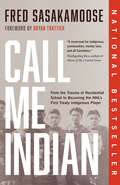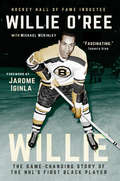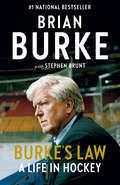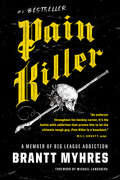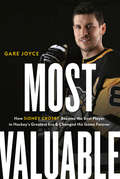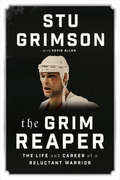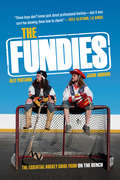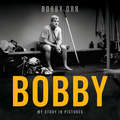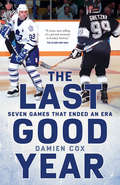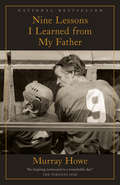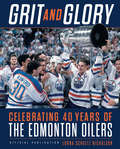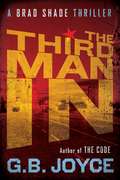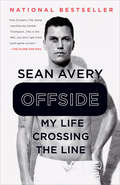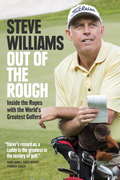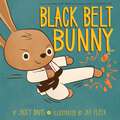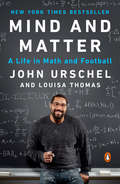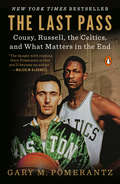- Table View
- List View
Collide
by Bal KhabraShe&’s an honors student with ambitious graduate school plans and he&’s a jock with only hockey on his mind, but once their worlds collide, their connection is hot enough to melt an ice rink.An ultimatum from Summer Preston&’s thesis advisor thrusts her into an unexpected collision with the hockey team&’s captain, Aiden Crawford. She&’s caught between conflicting desires of fulfilling her lifelong dream of becoming a sport psychologist and staying as far away as possible from the god-awful sport. And once she meets Aiden—well, let&’s just say he confirms all her worst assumptions about hockey players. Being the captain of the college hockey team has its perks, except when a reckless mistake by Aiden&’s team threatens to jeopardize their entire season. As punishment, Aiden&’s coach nominates him as the subject of a student research project. Participating is the last thing he wants to do, especially since the girl leading the project looks like she could wield his skates as a weapon.Summer can&’t stand Aiden&’s blasé approach to life, and Aiden doesn&’t understand why she&’s twenty years old with a twenty-five-year plan. But their bickering soon turns to bantering—and once they let their guards down, there&’s nothing to check their feelings.
Down and Back: On Alcohol, Family, and a Life in Hockey
by Justin BourneFor readers of Nine Lessons I Learned from My Father and Hockey Confidential, Down and Back tells broadcaster Justin Bourne&’s story of following his Hall-of-Fame father not only to the NHL, but also into rehab.Bob Bourne was everything a son wants to emulate—an NHL All-Star, a Sports Illustrated &“Sportsman of the Year,&” a Stanley Cup champion. Justin Bourne followed in those huge footsteps, leading his teams in scoring year after year, and finally garnering an invitation to the New York Islanders&’ training camp—the same team his father had played for. But Bourne was also following his father down a darker path.Though he hadn&’t begun drinking until he was 21, by 36 his drinking had nearly swamped his career and his marriage. In an act of brutal self-honesty—which may not have been possible if not for his understanding of how lying spurred by alcoholism can cause a family pain—Bourne got help, got sober, and confronted what his father and the game mean to him.Down and Back is a frank and unflinching appraisal of the game and Bourne&’s relationship with it: the violence and danger, the booze and drugs, the consequences of fame. But it is also an honest look at what is redeeming about the sport, through the eyes of someone who grew up in NHL dressing rooms, who has skated on NHL ice as both a player and a coach, and who inherited the game from a man he&’s grown to better understand by looking more closely at himself.
Life in Two Worlds: A Coach's Journey from the Reserve to the NHL and Back
by Ted NolanIn 1997 Ted Nolan won the Jack Adams Award for best coach in the NHL. But he wouldn&’t work in pro hockey again for almost a decade. What happened?Growing up on a First Nation reserve, young Ted Nolan built his own backyard hockey rink and wore skates many sizes too big. But poverty wasn&’t his biggest challenge. Playing the game meant spending his life in two worlds: one in which he was loved and accepted and one where he was often told he didn&’t belong.Ted proved he had what it took, joining the Detroit Red Wings in 1978. But when his on-ice career ended, he discovered his true passion wasn&’t playing; it was coaching. First with the Soo Greyhounds and then with the Buffalo Sabres, Ted produced astonishing results. After his initial year as head coach with the Sabres, the club was being called the &“hardest working team in professional sports.&” By his second, they had won their first Northeast Division title in sixteen years.Yet, the Sabres failed to re-sign their much-loved, award-winning coach.Life in Two Worlds chronicles those controversial years in Buffalo—and recounts how being shut out from the NHL left Ted frustrated, angry, and so vulnerable he almost destroyed his own life. It also tells of Ted&’s inspiring recovery and his eventual return to a job he loved. But Life in Two Worlds is more than a story of succeeding against the odds. It&’s an exploration of how a beloved sport can harbour subtle but devastating racism, of how a person can find purpose when opportunity and choice are stripped away, and of how focusing on what really matters can bring two worlds together.
Mind Over Matter: Hard-Won Battles on the Road to Hope
by Jordin Tootoo Stephen BruntFollowing the bestselling success of the inspiring All the Way, pioneering Inuit NHLer Jordin Tootoo begins the process of healing in the wake of the suicide and violence that marks his family, only to discover the source of all that trauma in his father's secret past.For some hockey players, retirement marks the moment when it&’s all over. But Jordin Tootoo is not most hockey players.Having inspired millions when he first broke into the league, Tootoo continued to influence people throughout his career—not only through his very public triumph over alcoholism, but also his natural charisma. And now, years after hanging up his skates, he is more committed to doing things the right way and speaking about it to others, whether it&’s corporate executives or Indigenous youth.But the news of unmarked graves on the grounds of residential schools brought back to life many of the demons that had haunted his family. In a moment of realization that left him rattled and saddened, Tootoo fit the pieces together. The years that were never spoken of. The heavy drinking. The all too predictable violence. His father was a survivor, marked by what he had survived.As he travels back to Nunavut to try to speak with his father about what haunts him, he encounters the ghosts of the entire community. Still, as Tootoo says, we are continuously learning and rewriting our story at every step. He has learned from his mistakes and his victories. He has learned from examples of great courage and humility. He has learned from being a father and a husband. And he has learned from his own Inuk traditions, of perseverance and discipline in the face of hardship.Weaving together life&’s biggest themes with observations and experiences, Jordin shares the kind of wisdom he has had to specialize in—the hard-won kind.
Forever Terry: A Legacy in Letters
by Editor Darrell FoxTerry Fox defined perseverance and hope for a generation of Canadians. Forty years after Terry's run ended, Forever Terry reflects what Terry's legacy means to us now, and in the future.To mark the 40th anniversary of the Marathon of Hope, Forever Terry: A Legacy in Letters recounts the inspiration, dedication, and perseverance that Terry Fox embodied, and gives voice to an icon whose example spoke much louder than his words. Comprising 40 letters from 40 contributors, and edited by Terry&’s younger brother Darrell on behalf of the Fox family, Forever Terry pays tribute to Terry's legacy, as seen through the eyes of celebrated Canadians ranging from Margaret Atwood, Bobby Orr, Perdita Felicien, Jann Arden, and Christine Sinclair, to those who accompanied Terry on his run, Terry Fox Run organizers, participants, supporters, and cancer champions. Appearing alongside never-before-seen photos of their hero, their reflections reveal connections that readers would never have expected, and offer a glimpse into the way goodness and greatness inspire more of the same. Forever Terry is a testament to the influence one brave man has had on the shape of Canadian dreams, ambitions, and commitment to helping others. Author proceeds support the Terry Fox Foundation, which has raised over $800 million for cancer research. Contributors include Hayley Wickenheiser, Tom Cochrane, Darryl Sittler, Shawn Ashmore, Doug Alward, Nadine Caron, Douglas Coupland, Rick Hansen, Sidney Crosby, Akshay Grover, Lloyd Robertson, Bret Hart, Leslie Scrivener, Isadore Sharp, Wayne Gretzky, Jim Pattison, Catriona Le May Doan, Malindi Elmore, Michael Bublé, Silken Laumann, Steve Nash, Karl Subban, and Marissa Papaconstantinou, among many others.
Over the Boards: Lessons from the Ice
by Hayley WickenheiserThe greatest women&’s hockey player of all time, Hayley Wickenheiser shares the lessons that won her four Olympic gold medals, and hard-earned wisdom distilled from moments when she fell short. There is no one in the world like Hayley Wickenheiser. 13 World Championship appearances. 6 Olympic Games. Hockey Hall of Famer. All while raising a child, earning multiple university degrees, and not benefiting from the financial stability male professional athletes have. She gave the game everything she had—now, Hayley shares what the game gave her. From motherhood to pro leagues to her new career in medicine, Hayley shares the hard-won lessons she learned on and off the ice that helped her not only have a record-breaking hockey career but craft a life filled with joy, growth, and challenges. In her own words, Hayley shares how she rose from the backyard pond and changing in boiler rooms (because girls' dressing rooms didn&’t exist) to Olympic MVP (twice). How becoming a parent made her a better athlete. How she learned to thrive under monumental pressure. But she doesn&’t stop at revealing the pillars to her tremendous success—Hayley delves into her immense failures and how she grew from them. Like Kobe Bryant, Tom Brady, and Abby Wambach before her, Hayley shares her wisdom through personal stories of triumph, relentlessness, and more than a couple confrontations. Told with humour, compassion, and steadfast optimism, Hayley&’s practical advice, coaching, and invaluable perspective inspires readers to never accept &“that&’s not the way we do things&” or &“that hasn&’t been done before&” as limitations. An empowering and pragmatic guide, Hayley encourages readers to not follow in her footsteps, but to carve their own ice.
We the North: 25 Years of the Toronto Raptors
by Doug SmithBringing Jurassic Park to your home, a celebration of the 25th anniversary of Canada's most exciting team.When the Toronto Raptors first took the court back in 1995, the world was a very different place. Michael Jordan was tearing up the NBA. No one had email. And a lot of people wondered whether basketball could survive in Toronto, the holy city of hockey.Twenty-five years later, the Raptors are the heroes not only of the 416, but of the entire country. That is the incredible story of We the North, told by Doug Smith, the Toronto Starreporter who has been covering the team since the press conference announcing Canada's new franchise and the team's beat reporter from that day on.Comprising twenty-five chapters to mark the team's twenty-five years, We the North celebrates the biggest moments of the quarter-century--from Vince Carter's amazing display at the dunk competition to the play-off runs, the major trades, the Raptors'incredible fans, including Nav Bhatia and Drake, and,of course,the challenges that marked the route to the championship-clinching Game 6 that brought the whole countryto a standstill.We the North: 25 Years of the Toronto Raptors tells the story of Canada's most exciting team, charting their rise from a sporting oddity in a hockey-mad country to the status they hold today as the reigning NBA champions and national heroes.
Call Me Indian: From the Trauma of Residential School to Becoming the NHL's First Treaty Indigenous Player
by Fred Sasakamoose"Fred Sasakamoose played in the NHL before First Nations people had the right to vote in Canada. This page turner will have you cheering for 'Fast Freddy' as he faces off against huge challenges both on and off the ice--a great gift to every proud hockey fan, Canadian, and Indigenous person."--Wab Kinew, Leader of the Manitoba NDP and author of The Reason You WalkTrailblazer. Residential school Survivor. First Treaty Indigenous player in the NHL. All of these descriptions are true--but none of them tell the whole story.Fred Sasakamoose, torn from his home at the age of seven, endured the horrors of residential school for a decade before becoming one of 120 players in the most elite hockey league in the world. He has been heralded as the first Indigenous player with Treaty status in the NHL, making his official debut as a 1954 Chicago Black Hawks player on Hockey Night in Canada and teaching Foster Hewitt how to pronounce his name. Sasakamoose played against such legends as Gordie Howe, Jean Beliveau, and Maurice Richard. After twelve games, he returned home.When people tell Sasakamoose's story, this is usually where they end it. They say he left the NHL to return to the family and culture that the Canadian government had ripped away from him. That returning to his family and home was more important to him than an NHL career. But there was much more to his decision than that. Understanding Sasakamoose's choice means acknowledging the dislocation and treatment of generations of Indigenous peoples. It means considering how a man who spent his childhood as a ward of the government would hear those supposedly golden words: "You are Black Hawks property."Sasakamoose's story was far from over once his NHL days concluded. He continued to play for another decade in leagues around Western Canada. He became a band councillor, served as Chief, and established athletic programs for kids. He paved a way for youth to find solace and meaning in sports for generations to come. Yet, threaded through these impressive accomplishments were periods of heartbreak and unimaginable tragedy--as well moments of passion and great joy.This isn't just a hockey story; Sasakamoose's groundbreaking memoir sheds piercing light on Canadian history and Indigenous politics, and follows this extraordinary man's journey to reclaim pride in an identity and a heritage that had previously been used against him.
Willie: The Game-Changing Story of the NHL's First Black Player (Nhl Ser.)
by Willie O'Ree Michael McKinleyAn inspiring memoir that shows that anyone can achieve their dreams if they are willing to fight for them.In 1958, Willie O'Ree was a lot like any other player toiling in the minors. He was good. Good enough to have been signed by the Boston Bruins. Just not quite good enough to play in the NHL.Until January 18 of that year. O'Ree was finally called up, and when he stepped out onto the ice against the Montreal Canadians, not only did he fulfil the childhood dream he shared with so many other Canadian kids, he did something that had never been done before. He broke hockey's colour barrier. Just as his hero, Jackie Robinson, had done for baseball.In that pioneering first NHL game, O'Ree proved that no one could stop him from being a hockey player. But he soon learned that he could never be just a hockey player. He would always be a black player, with all that entails. There were ugly name-calling and stick-swinging incidents, and nights when the Bruins had to be escorted to their bus by the police. But O'Ree never backed down. When he retired in 1979, he had played hundreds of games as a pro, and scored hundreds of goals, his boyhood dreams more than accomplished.In 2018, O'Ree was inducted into the Hockey Hall of Fame in recognition not only of that legacy, but of the way he has built on it in the decades since. He has been, for twenty years now, an NHL Executive and has helped the NHL Diversity program expose more than 40,000 boys and girls of diverse backgrounds to unique hockey experiences. Inspiring, frank, and shot through with the kind of understated courage and decency required to change the world, Willie is a story for anyone willing to persevere for a dream.
Burke's Law: A Life in Hockey
by Brian Burke Stephen BruntThe gruffest man in hockey opens up about the challenges, the feuds, and the tragedies he's fought through.Brian Burke is one of the biggest hockey personalities--no, personalities full-stop--in the media landscape. His brashness makes him a magnet for attention, and he does nothing to shy away from it. Most famous for advocating "pugnacity, truculence, testosterone, and belligerence" during his tenure at the helm of the Maple Leafs, Burke has lived and breathed hockey his whole life. He has been a player, an agent, a league executive, a scout, a Stanley Cup-winning GM, an Olympic GM, and a media analyst. He has worked with Pat Quinn, Gary Bettman, and an array of future Hall of Fame players. No one knows the game better, and no one commands more attention when they open up about it.But there is more to Brian Burke than hockey. He is a graduate of Harvard Law School, and an accomplished businessman with hard-earned lessons that comefrom highly scrutinized decisions made at the helm of multi-million-dollar companies. And despite his brusque persona on camera and in the boardroom, he is nevertheless a father with a story to tell. He lost his youngest son in a car accident, and has had to grapple with that grief, even in the glare of the spotlight. Many Canadians and hockey fans knew Brendan Burke's name already, because his father had become one of the country's most outspoken gay-rights advocates when Brendan came out in 2009.From someone whose grandmother told him never to start a fight, but never to run from one either, Burke's Law is an unforgettable account of old beefs and old friendships, scores settled and differences forgiven, and many lessons learned the hard way.
Pain Killer: A Memoir of Big League Addiction
by Brantt Myhres"This book is at times startling, yet very real and down to earth . . . I saw [Brantt] in all phases of his life and his career. I consider him a friend and an ally. Pain Killer sends a strong message." --Darryl Sutter, former NHL player, coach, and GMFrom the only player to be banned for life from the NHL, a harrowing tale of addiction, and an astonishing path to recovery.Brantt Myhres wasn't around for the birth of his daughter. Myhres had played for seven different NHL teams, and had made millions. But he'd been suspended four times, all for drug use, and he had partied his way out of the league. By the time his daughter was born, he was penniless, sleeping on a friend's couch. He'd just been released from police custody. He had a choice between sticking around for the birth, or showing up for league-mandated rehab. He went to rehab. For the fifth time.This is his story, in his own words, of how he fought his way out of minor hockey into the big league, but never left behind the ghosts of a bleak and troubled childhood. He tells the story of discovering booze as a way of handling the anxiety of fighting, and of the thrill of cocaine. In the raw language of the locker room, he tells of how substance abuse poisoned the love he had in his life and sabotaged a great career. Full of stories of week-long benders, stripper-filled hot tubs, motorcycle crashes, and barroom brawls, Pain Killer is at its most powerful when Myhres acknowledges how he let himself down, and betrayed those who trusted him. Again and again, he fools the executives and doctors who gave him a second chance, then a third, then a fourth, and with each betrayal, he spirals further downward.But finally, on the eve of his daughter's birth, when all the money was gone, every bridge burnt, and every opportunity squandered, he was given a last chance. And this time, it worked.It worked so well, that not only has he been around for his daughter for the past eleven years, in 2015 he was signed by the LA Kings as a "sober coach": a guy who'd been there, a guy who could recognize and help solve problems before they ruined lives and made headlines (as the Kings had seen happen three times that season). Not only did Myhres save himself, he saved others. Unpolished, unpretentious, and unflinching, Myhres tells it like it is, acknowledging every mistake, and painting a portrait of an angry, violent, dangerous man caught in the vice of something he couldn't control, and didn't understand. If Brantt Myhres can pull himself together, anyone can. And he does, convincingly, and inspiringly.
Most Valuable: How Sidney Crosby Became the Best Player in Hockey's Greatest Era and Changed the Game Forever
by Gare JoyceThis hockey generation's brightest talent has been plagued by concussions. Now, the very style of play that has brought Crosby such success may be heralding the end of his career.Sidney Crosby is arguably the best player ever to put on skates. You could argue that Bobby was better, or Wayne, or Gordie. But it would be hard to argue that any of those guys changed the game as much as Sid. No defenceman came along in Bobby's wake to play like him. There will never be another 99. But in Crosby's case, the entire league was re-made in his image. The game can be divided into two eras: before and after Sidney Crosby arrived in 2005, breaking Mario Lemieux's rookie scoring record. Says NHL star Matt Duchene, who entered the league in 2008, just three years after Crosby: "Just in the time that I was going from peewee and bantam to junior, there was a whole other game before and after. You didn't have a choice really--you had to adapt and adopt the way he did things or get left way behind."In an effort to keep up with Sid, the game changed. It's faster now, more skilled. There are more highlight-reel goals, and fewer fights. And in many ways, Crosby has thrived. Three Stanley Cups. Two Olympic gold medals. A World Cup. And enough individual trophies to fill a truck. But then, if Crosby hadn't changed the league, he might expect a longer career. Today, Sidney Crosby is the first generational superstar whose every shift could be his last. He invented a faster game, and the faster game has taken its toll on its creator. Crosby has suffered several concussions, and missed most of an entire season with symptoms. He plays the game fearlessly, but he also plays it without a bodyguard.The irony is that he created a league that made it harder for him to thrive. And the tragedy may be that he has created a league that will bring his career to an end in one fell swoop, in front of millions.Telling the story of a generational talent and the way he has revolutionized the game, Gare Joyce will also bring into focus crucial questions about the way the game is played today, assessing fighting and concussions in the light of the way these issues impinge on arguably the greatest player ever to skate.
The Grim Reaper: The Life and Career of a Reluctant Warrior
by Stu GrimsonA powerful memoir from an NHL heavyweight champion who moved from the dressing room to the courtroom.NHL tough guys all tell the same story. They all grew up dreaming of skating in the big league as stars. Then one day, a coach tells them the only way to make it is to drop the gloves. And every guy says the same thing: I'll do whatever it takes to play in the NHL.Not Stu Grimson, though. When he was offered a contract to patrol the ice for the Calgary Flames, he said no thanks, and went to university instead. And that's the way Grimson has approached his career and his life: on his own terms. He stared down the toughest players on the planet for seventeen years, while working on his first university degree. He retired on his own terms, and went on to practice law, including a stint as in-house counsel for the NHLPA.This has put him in a unique position when it comes to commenting on the game. He's seen it from the trenches, and he's seen it from the courtroom. This puts him in the eye of the storm surrounding fighting and concussions. And he handles that the way he does everything: on his own terms. When Don Cherry called him out on televison, it was the seemingly indominable Cherry who backed down. Hockey fans will be fascinated by his data-driven defence of fighting.But in the end, this is not a book about fighting and locker-room stories. It's the story of a young man who ultimately took on the toughest role in pro sports and came out the other side. Where many others have not.
The Fundies: The Essential Hockey Guide from On the Bench
by Olly Postanin Jacob ArdownPutting the old-school grease back in hockey, in the first ever written eppie!Do you have trouble sniping top corns or landing a big conny? Keep missing the net in praccy or losing all your tillys? Well boys, you might need the fundies. Canadian beauties Olly Postanin and Jacob Ardown are natural athletes, and are here to show you how to be a weapon on the ice. All the big-leaguers (like Connor McDavid and Drew Doughty, not a big deal) come to Olly and Jacob for help on hockey fundamentals (the fundies); now you can get the insider tips and tricks to become a legend yourself. With their crucie knowledge of what makes hockey the best game in the world and all the greatest chirps, there is no other book like The Fundies. This guide to dominating the sport covers everything: history, skills development, throwing folded fives, training and choosing equipment, coaching, and all the ways to get respect on and off the ice. The boys will grease you through all you need to know and, if you stay focused, you’ll learn the essential skills necessary to dominate in the game. Throw on a bucket: you’re about to be hit with some grade A knowledge. From blocking biscuits and tickling twine to the perfect post-goal celly to impress the scouties, The Fundies is here to teach you how hockey is supposed to be played.
Bobby: My Story in Pictures
by Bobby OrrOne of the greatest sports figures of all time at last breaks his silence in a memoir as unique as the man himself. Number 4. It is just about the most common number in hockey, but invoke that number and you can only be talking about one player -- the man often referred to as the greatest ever to play the game: Bobby Orr. From 1966 through the mid-70s he could change a game just by stepping on the ice. Orr could do things that others simply couldn’t, and while teammates and opponents alike scrambled to keep up, at times they could do little more than stop and watch. Many of his records still stand today and he remains the gold standard by which all other players are judged. Mention his name to any hockey fan – or to anyone in New England – and a look of awe will appear. But skill on the ice is only a part of his story. All of the trophies, records, and press clippings leave unsaid as much about the man as they reveal. They tell us what Orr did, but don’t tell us what inspired him, who taught him, or what he learned along the way. They don’t tell what it was like for a shy small-town kid to become one of the most celebrated athletes in the history of the game, all the while in the full glare of the media. They don’t tell us what it was like when the agent he regarded as his brother betrayed him and left him in financial ruin, at the same time his battered knee left him unable to play the game he himself had redefined only a few seasons earlier. They don’t tell about the players and people he learned to most admire along the way. They don’t tell what he thinks of the game of hockey today. Orr himself has never put all this into words, until now. After decades of refusing to speak of his past in articles or “authorized” biographies, he finally tells his story, because he has something to share: “I am a parent and a grandparent and I believe that I have lessons worth passing along.” In the end, this is not just a book about hockey. The most meaningful biographies and memoirs rise above the careers out of which they grew. Bobby Orr’s life goes far deeper than Stanley Cup rings, trophies and recognitions. His story is not only about the game, but also the age in which it was played. It’s the story of a small-town kid who came to define its highs and lows, and inevitably it is a story of the lessons he learned along the way.
The Last Good Year: Seven Games That Ended an Era
by Damien CoxWe may never see a playoff series like it again.Before Gary Bettman, and the lockouts. Before all the NHL's old barns were torn down to make way for bigger, glitzier rinks. Before expansion and parity across the league, just about anything could happen on the ice. And it often did. It was an era when huge personalities dominated the sport; and willpower was often enough to win games. And in the spring of 1993, some of the biggest talents and biggest personalities were on a collision course. The Cinderella Maple Leafs had somehow beaten the mighty Red Wings and then, just as improbably, the St. Louis Blues. Wayne Gretzky's Kings had just torn through the Flames and the Canucks. When they faced each other in the conference final, the result would be a series that fans still talk about passionately 25 years later. Taking us back to that feverish spring, The Last Good Year gives an intimate account not just of an era-defining seven games, but of what the series meant to the men who were changed by it: Marty McSorley, the tough guy who took his whole team on his shoulders; Doug Gilmour, the emerging superstar; celebrity owner Bruce McNall; Bill Berg, who went from unknown to famous when the Leafs claimed him on waivers; Kelly Hrudey, the Kings' goalie who would go on to become a Hockey Night in Canada broadcaster; Kerry Fraser, who would become the game's most infamous referee; and two very different captains, Toronto's bull in a china shop, Wendel Clark, and the immortal Wayne Gretzky. Fast-paced, authoritative, and galvanized by the same love of the game that made the series so unforgettable, The Last Good Year is a glorious testament to a moment hockey fans will never forget.
Nine Lessons I Learned from My Father
by Murray HoweAs a child, Murray Howe wanted to be like his father. He was an adult before he realized that didn't necessarily mean playing hockey.Gordie Howe may have been the greatest player in the history of hockey, but greatness was never defined by goals or assists in the Howe household. Greatness meant being the best person you could be, not the best player on the ice. Unlike his two brother, Murray Howe failed in his attempt to follow in his father's footsteps to become a professional athlete. Yet his failure brought him to the realization that his dream wasn't really to be a pro hockey player. His dream was to be his father. To be amazing at something, but humble and gracious. To be courageous, and stand up for the little guy. To be a hero. You don't need to be a hockey player to do that. What he learned was that it was a waste of time wishing you were like someone else. When Gordie Howe passed away in 2016, it was Murray who was asked to deliver the eulogy. Nine Lessons I Learned from My Father takes the reader through the hours Murray spent writing the words that would give shape to his father's leagcy--the hours immediately after his hero's death, as he gathers his thoughts and memories, and makes sense of what his remarkable father meant to him. The result is nine pieces of wisdom, built out of hundreds of stories, that show us the man behind the legend and give us a glimpse of what we can learn from this incredible life.
Grit and Glory: Celebrating 40 Years of the Edmonton Oilers
by Lorna Schultz NicholsonThe complete story of the Edmonton Oilers--from Wayne Gretzky and the dynasty years, to Connor McDavid and the future, and everything in between.When the Edmonton Oilers joined the NHL in 1979, the team owner, Peter Pocklington, proclaimed they would win their first Stanley Cup within five years. A bold statement that turned out to be half right: they not only won the Cup in 1984, but won it four more times over the next six years, forging one of the most dominant dynasties ever. The Oilers have always been a team of determination--fast scoring, hard hitting, and creative hockey that has earned them loyal fans across North America. The team has faced adversity, both on and off the ice. As a small market team, the Oilers have struggled to compete in the NHL, but always found a way. From the biggest trade in history that saw the Great One leave for L.A., to the eleventh hour negotiations that kept the team in Edmonton with a cadre of thirty-seven passionate owners--there is no club like it. And now with super star Connor McDavid leading the roster there's never been greater promise for the future. With forty years of NHL action to celebrate, acclaimed sports writer Lorna Schultz Nicholson takes a journey back to the Oiler's phenomenal highs and challenging lows, the larger than life characters and amazing records, to tell the remarkable story of the hardest working club in the game. Fully illustrated with rare and exciting images, and published in full partnership with the Edmonton Oilers, this is the must have book for Oilers fans, and hockey fans, everywhere.
The Third Man In
by Gare JoyceCorruption runs deep in the third installment of the Brad Shade thrillers, the series that inspired the hit Global TV show Private Eyes. When Brad Shade arrives in Russia, he knows exactly what to expect. As a former journeyman turned Scouting Director for Los Angeles, Shade is accustomed to delays at the world's worst airport, run-ins with Vlad Dubinin, once his rival, now his Moscow scout, and the perpetual headache of getting draft picks released from the KHL. But this trip starts off with a catastrophic bang: one player collapses suddenly mid-game, L.A.'s top prospect is missing, and a fatal explosion leaves deals dashed and the league reeling. Forced to contend with violent interference from the FSB, Shade becomes increasingly aware that what looks like a series of unrelated disasters may be something far more sinister. And when everything points to deception within his own organization, Shade realizes yet again that the game played off the ice is just as dangerous--and far more deadly--than the game played on it.
Offside: My Life Crossing the Line
by Sean AveryHockey's most polarizing figure takes us inside the game, shedding light not only on what goes on behind closed doors, but also what makes professional athletes tick.As one of the NHL's most polarizing players, Sean Avery turned the rules of professional hockey on their head. For thirteen seasons, he played for some of the most storied franchises in the league, including the Detroit Red Wings, the Los Angeles Kings, and the New York Rangers, making his mark in each city as a player who was sometimes loved, sometimes despised, and always controversial. In Offside, Avery displays his trademark candor about the world of pro hockey and does for it what Jim Bouton's game-changing Ball Four did for baseball. Avery goes deep inside the sport to reveal every aspect of pro athletes' lives, from how they spend their money and their nights off to how they stay sharp and conditioned and employed. Avery also examines his singular career path–while playing the talented villain on ice, he skated out of character in the off-season, taking on unexpected and unprecedented roles: Vogue intern, fashion model, advertising executive, restaurateur, gay rights advocate, and many more. Rollickingly honest and compelling throughout, Offside transcends the sports book genre and offers a rare, unvarnished glimpse into the world of twenty-first-century hockey through the eyes of one of its most original and memorable players.
Out of the Rough
by Steve Williams Michael DonaldsonWith 150 wins to his name, Steve Williams is one of the most successful caddies of the modern era. From his modest start in freelancing his way around the world's golf courses, he became a man in demand, working with some of the golfing world's best. Greg Norman, Raymond Floyd, Terry Gale, Ian Baker-Finch, and Adam Scott all benefitted from the knowledge, experience, and honesty for which Williams is known. Williams is perhaps best known, however, for his triumphant thirteen years on the bag of Tiger Woods. Together, Woods and Williams won more than 80 tournaments--with 13 major championships among them. But it wasn't all celebrations. Despite his best efforts, Williams could only watch as Woods fell from the podium, his game in decline--ignorant of the scandal about to make headlines around the world that would nearly ruin Tiger's pro career. In this candid book, Williams tells the stories of golf's elites that you won't hear anywhere else--the highs and lows of their careers, and the critical role of a caddie in both spots. Bold and entertaining, his story offers a rare insider's view of the professional golfing world.
Out of the Rough
by Steve WilliamsWith 150 wins to his name, Steve Williams is one of the most successful caddies of the modern era. From his modest start in freelancing his way around the world's golf courses, he became a man in demand, working with some of the golfing world's best. Greg Norman, Raymond Floyd, Terry Gale, Ian Baker-Finch, and Adam Scott all benefitted from the knowledge, experience, and honesty for which Williams is known. Williams is perhaps best known, however, for his triumphant thirteen years on the bag of Tiger Woods. Together, Woods and Williams won more than 80 tournaments--with 13 major championships among them. But it wasn't all celebrations. Despite his best efforts, Williams could only watch as Woods fell from the podium, his game in decline--ignorant of the scandal about to make headlines around the world that would nearly ruin Tiger's pro career. In this candid book, Williams tells the stories of golf's elites that you won't hear anywhere else--the highs and lows of their careers, and the critical role of a caddie in both spots. Bold and entertaining, his story offers a rare insider's view of the professional golfing world.
Black Belt Bunny
by Jacky DavisFrom the author of the bestselling Ladybug Girl series, this hilarious, empowering picture book about a little black-belt who faces a new challenge is perfect for fans of The Three Ninja Pigs, The Pigeon Finds a Hot Dog, and I Will Never Not Ever Eat a Tomato Black Belt Bunny is fast and strong and has seriously awesome moves—from front-kicks to back-flips to air-chops. Then he&’s faced with something new, something every bunny must learn, something he might not be as good at: He has to make . . . a salad. Black Belt Bunny tries to escape. He even disguises himself with a fake mustache. But when he finally hops to it, he discovers that his seriously awesome moves come in pretty handy, and that—in a funny twist that puts the narrator in the hot seat—he isn&’t the only one who has to try new things.
Mind and Matter: A Life in Math and Football
by Louisa Thomas John UrschelFor John Urschel, what began as an insatiable appetite for puzzles as a child developed into mastery of the elegant systems and rules of mathematics. By the time he was thirteen, Urschel was auditing a college-level calculus course. But when he joined his high school football team, a new interest began to eclipse the thrill he felt in the classroom. Football challenged Urschel in an entirely different way, and he became addicted to the physical contact of the sport. After he accepted a scholarship to play at Penn State, his love of math was rekindled. As a Nittany Lion, he refused to sacrifice one passion for the other. Against the odds, Urschel found a way to manage his double life as a scholar and an athlete. While he was an offensive lineman for the Baltimore Ravens, he simultaneously pursued his PhD in mathematics at MIT. Weaving together two separate narratives, Urschel relives for us the most pivotal moments of his bifurcated life. He explains why, after Penn State was sanctioned for the acts of former coach Jerry Sandusky, he declined offers from prestigious universities and refused to abandon his team. He describes his parents’ different influences and their profound effect on him, and he opens up about the correlation between football and CTE and the risks he took for the game he loves. Equally at home discussing Georg Cantor’s work on infinities and Bill Belichick’s playbook, Urschel reveals how each challenge—whether on the field or in the classroom—has brought him closer to understanding the two different halves of his own life, and how reason and emotion, the mind and the body, are always working together. “So often, people want to divide the world into two,” he observes. “Matter and energy. Wave and particle. Athlete and mathematician. Why can’t something (or someone) be both?”
The Last Pass: Cousy, Russell, the Celtics, and What Matters in the End
by Gary M. PomerantzOut of the greatest dynasty in American professional sports history, an intimate story of race, mortality, and regretAbout to turn ninety, Bob Cousy, the Hall of Fame Boston Celtics captain who led the team to its first six championships on an unparalleled run, has much to look back on in contentment. But he has one last piece of unfinished business. The last pass he hopes to throw is to close the circle with his great partner on those Celtic teams, fellow Hall of Famer Bill Russell, now 84. These teammates were basketball's Ruth and Gehrig, and Cooz, as everyone calls him, was famously ahead of his time as an NBA player in terms of race and civil rights. But as the decades passed, Cousy blamed himself for not having done enough, for not having understood the depth of prejudice Russell faced as an African-American star in a city with a fraught history regarding race. Cousy wishes he had defended Russell publicly, and that he had told him privately that he had his back. At this late hour, he confided to acclaimed historian Gary Pomerantz over the course of many interviews, he would like to make amends. At the heart of the story THE LAST PASS tells is the relationship between these two iconic athletes. The book is also in a way Bob Cousy's last testament on his complex and fascinating life. As a sports story alone it has few parallels: An poor kid whose immigrant French parents suffered a dysfunctional marriage, the young Cousy escaped to the New York City playgrounds, where he became an urban legend known as the Houdini of the Hardwood. The legend exploded nationally in 1950, his first year as a Celtic: he would be an all-star all 13 of his NBA seasons. But even as Cousy's on-court imagination and daring brought new attention to the pro game, the Celtics struggled until Coach Red Auerbach landed Russell in 1956. Cooz and Russ fit beautifully together on the court, and the Celtics dynasty was born. To Boston's white sportswriters it was Cousy's team, not Russell's, and as the civil rights movement took flight, and Russell became more publicly involved in it, there were some ugly repercussions in the community, more hurtful to Russell than Cousy feels he understood at the time. THE LAST PASS situates the Celtics dynasty against the full dramatic canvas of American life in the 50s and 60s. It is an enthralling portrait of the heart of this legendary team that throws open a window onto the wider world at a time of wrenching social change. Ultimately it is a book about the legacy of a life: what matters to us in the end, long after the arena lights have been turned off and we are alone with our memories.
